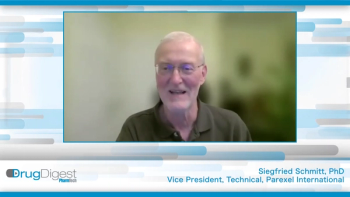
Roche Collaborates on Stem Cell Project
Roche and the Innovative Medicines Initiative (IMI) have recently launched an academic-industry partnership, known as STEMBANCC, under which 10 pharmaceutical companies and 23 academic institutions will collaborate on using stem cell technology to accelerate the development of safer and more effective drugs for patients.
Roche and the Innovative Medicines Initiative (IMI) have recently launched an academic-industry partnership, known as STEMBANCC, under which 10 pharmaceutical companies and 23 academic institutions will collaborate on using stem cell technology to accelerate the development of safer and more effective drugs for patients. This project will investigate the use of human-induced pluripotent stem cells for identifying drug targets and biomarkers, screening potential drug treatments, and toxicology testing. The focus will be on peripheral nervous system disorders, particularly pain; central nervous system disorders; neurodysfunctional diseases such as migraine, autism, schizophrenia and bipolar disorder; as well as diabetes.
“The aim of StemBANCC is to generate and characterise 1500 high quality human induced pluripotent stem cell lines derived from 500 patients that can be used by researchers to study a range of diseases, including diabetes and dementia. The cell lines will help implement patient models that will facilitate the drug development process thanks to the possibility of reproducing the disease mechanism in vitro.” Martin Graf, Head of the Stem Cell Platform and coordinator of the project at Roche said in a
The creation of the first induced pluripotent stem cells was a major scientific breakthrough that won scientists John Gurdon (Cambridge University) and Shinya Yamanaka (Kyoto University) the 2012 Nobel prize in physiology or medicine. While it is known that most adult cells can only divide to produce cells of the same type, scientists have discovered how to reprogram ordinary adult cells to create stem cells that are capable of generating various types of human cells, from cardiomyocytes to endothelial cells and neurons. These cell lines are extremely useful in early-stage, drug-development studies because they are derived from real patients and therefore contain the genes implicated in the disease of interest.
The potential of induced pluripotent stem cells was recognised by Roche more than three years ago and the company has since been working with researchers at Harvard University, Massachusetts General Hospital and Boston Children’s Hospital to create more than 100 human induced pluripotent stem cell lines that can be used to model cardiovascular and neurological diseases.
STEMBANCC stands as one of IMI’s biggest projects to date, with a total budget of EUR 55.6 million (USD 72.3 million). In its effort to boost drug development, IMI has also launched another six projects, which will focus on data integration and management, drug behaviour in the body, and ‘green’ drug development, amongst others.
Newsletter
Get the essential updates shaping the future of pharma manufacturing and compliance—subscribe today to Pharmaceutical Technology and never miss a breakthrough.





